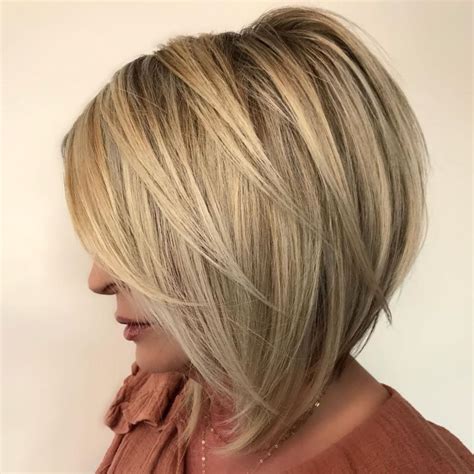Discover the best products, haircuts, washing techniques, styling tips, and heat protection for thick hair. Expert advice for healthy, beautiful hair.
Choosing the Right Products
Contents
When it comes to managing thick hair, choosing the right products is crucial for maintaining healthy locks. The first step is to determine your hair type and specific needs. Look for shampoos and conditioners that are formulated for thick or coarse hair, as they will have the necessary ingredients to nourish and moisturize your locks.
Next, consider incorporating a deep conditioning treatment into your hair care routine. Look for products that are designed to penetrate the hair shaft and provide intensive hydration. This will help keep your thick hair soft, manageable, and frizz-free.
Additionally, selecting the right styling products is essential for managing thick hair. Opt for volumizing mousses or creams to add lift and body to your locks. Avoid heavy, oil-based products that can weigh down your hair and make it appear greasy.
Finally, don’t forget about heat protectant sprays. If you frequently use hot tools like blow dryers, straighteners, or curling irons, it’s important to shield your thick hair from potential damage. Look for products that offer thermal protection to prevent breakage and split ends.
Best Haircuts for Thick Hair
Having thick hair can be both a blessing and a curse. While it can look voluminous and healthy, it can also be challenging to manage, especially when it comes to finding the right haircut. However, with the right haircut, thick hair can be stylish and easy to maintain. Here are some life-changing haircuts for thick hair that you should consider.
1. Long Layers: Long layers are perfect for thick hair as they help to reduce excess bulk and weight. It also adds movement and texture to the hair, making it more manageable. This haircut works well for both straight and wavy thick hair, giving it a natural and effortless look.
2. Blunt Cut: A blunt cut is a timeless and classic haircut that works wonders for thick hair. It helps to create a sleek and polished look while maintaining the thickness of the hair. This haircut is versatile and can be styled in various ways, making it a great option for those with thick hair.
3. Textured Bob: For those who prefer shorter hair, a textured bob is a great option for thick hair. The layers and texture added to the bob help to remove excess weight and bulk, while still maintaining the volume of the hair. This haircut is low-maintenance and adds a modern and trendy look to thick hair.
| Pros | Cons |
|---|---|
| Reduces excess bulk | May not work for all hair types |
| Creates movement and texture | Requires regular trims to maintain shape |
| Versatile and easy to style | Can be difficult to grow out |
Proper Washing Techniques
When it comes to managing thick hair, proper washing techniques are essential for keeping your locks healthy and beautiful. One of the most important tips for washing thick hair is to use a gentle, sulfate-free shampoo that won’t strip your strands of their natural oils. Additionally, it’s crucial to thoroughly rinse your hair after shampooing to ensure that no residue is left behind, which can weigh down thick hair and make it look limp and greasy.
Another key washing technique for thick hair is to only wash your hair as often as necessary. While it’s important to keep your scalp and hair clean, over-washing can actually strip your strands of their natural oils, leading to dryness and frizz. Instead, try to find a balance that works for your hair type, whether that means washing every other day or just a few times a week.
One trick for washing thick hair is to focus on your scalp when shampooing and condition the ends. Thick hair tends to be more prone to oiliness at the roots, so it’s important to thoroughly cleanse the scalp to remove any buildup. When it comes to conditioning, focus on applying conditioner to the mid-lengths and ends of your hair to prevent weighing it down and to help improve manageability.
Finally, proper drying techniques after washing can make a big difference in the health and appearance of your thick hair. Instead of rubbing your hair vigorously with a towel, opt for a microfiber towel or cotton t-shirt to gently squeeze out excess water. Additionally, it’s best to let your hair air dry whenever possible, as heat styling tools can be damaging to thick hair if used excessively.
Styling Tips for Thick Hair
Having thick hair can be both a blessing and a curse. While it offers volume and texture, it can also be difficult to manage and style. But with the right styling tips, you can make the most of your thick locks and achieve the look you desire.
One of the best ways to style thick hair is by using the right products. Look for hair styling products that are specifically designed for thick hair, such as mousses or volumizing sprays. These products can help to add texture and hold to your hair, making it easier to style and manage.
Another important tip for styling thick hair is to choose the right haircut. Opt for layered cuts to help reduce the weight of your hair and add movement and dimension. This can make styling your hair much easier and can also help to prevent it from looking bulky or overwhelming.
When styling your thick hair, it’s important to use the right techniques. Avoid using too much heat on your hair, as this can cause damage and dryness. Instead, opt for air-drying or use a diffuser attachment on your hairdryer to help enhance your natural texture and reduce frizz.
Finally, don’t be afraid to experiment with different hairstyles and accessories. From sleek ponytails to messy updos, there are countless ways to style thick hair. You can also try adding hair accessories such as headbands or clips to add some extra flair to your look.
Protecting Hair from Heat Damage
When it comes to styling your hair, the use of heat tools such as blow dryers, straighteners, and curling irons can cause significant damage to your locks. In order to protect your hair from heat damage, it is important to take certain precautions and follow specific guidelines.
First and foremost, using a heat protectant is essential before using any heat styling tools. Heat protectants create a barrier between your hair and the high temperatures of styling tools, minimizing the potential for damage.
Another important step in protecting your hair from heat damage is to adjust the heat settings on your styling tools. Using lower temperatures and avoiding excessive heat exposure can help minimize damage to your hair.
Additionally, it is crucial to limit the frequency of heat styling. Overuse of heat tools can lead to dry, brittle hair and increased breakage. By allowing your hair to air dry or using alternative styling methods, you can reduce the amount of heat your hair is exposed to.
Furthermore, incorporating deep conditioning treatments and regular trims into your hair care routine can help maintain the overall health of your hair, making it more resilient to heat damage.











